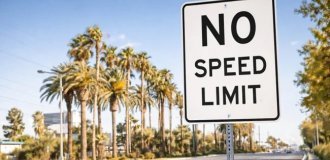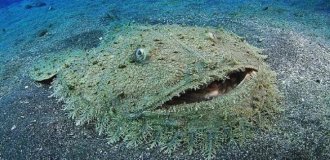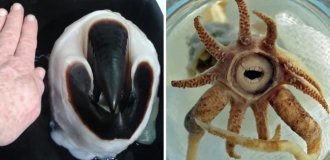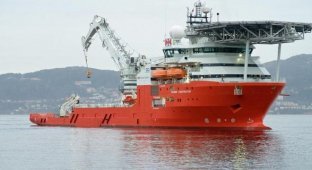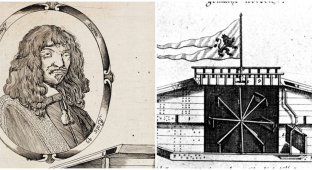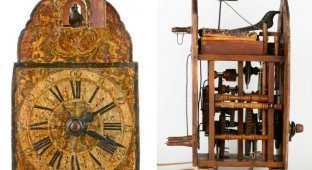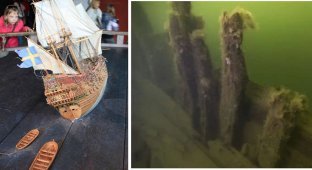If a modern person were to board an 18th-century warship on a long voyage, he would most likely mistake it for Noah’s Ark. According to the British historian Roger, “It just so happened that the British navy of the 18th century combined the discipline and efficiency of a warship with a playground, a farmstead, a circus and an amusement park.” 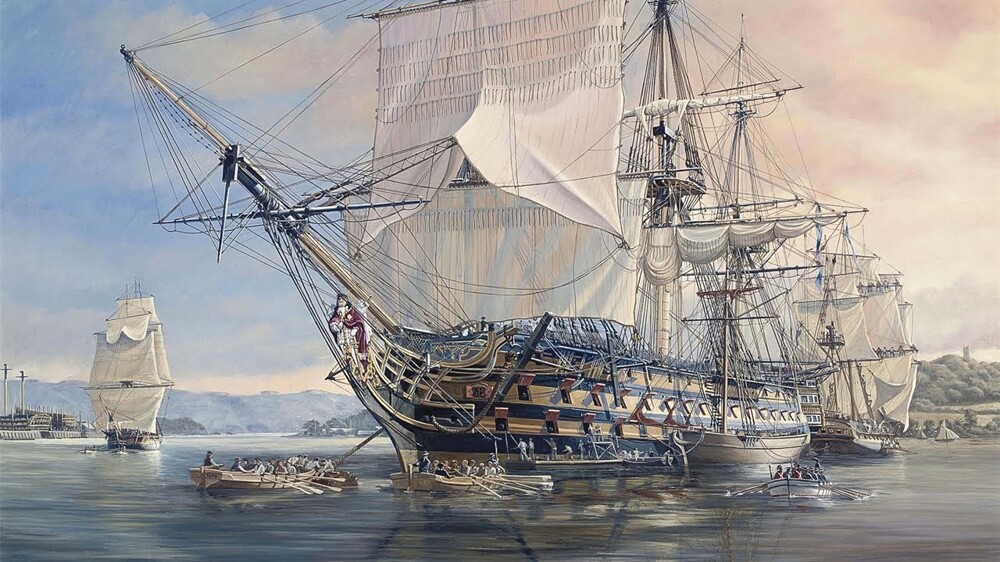
The ships of the sailing era were inhabited by a wide variety of animals.
Some stole food from sailors, others themselves became part of the ship's menu, and others were taken on board for resale.
Ship rats 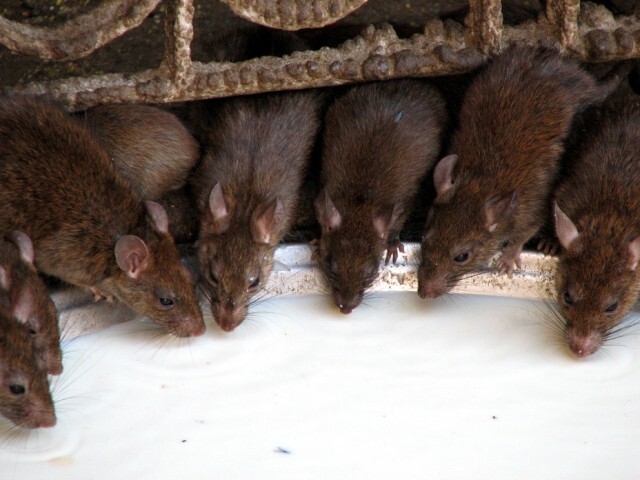
The most famous and numerous representative of the fauna on the ship were, of course, rats. You should not believe the stories that some sailing ship completely got rid of rats upon arrival at the port. There was only one version of the ship without these creatures - the one that had just been launched from the stocks. As soon as food appeared on the ship, rats appeared. They devoured everything - cereal supplies, meat, crackers, butter, plants, etc. When supplies ran out, the rats quite successfully fed on the boards, sometimes gnawing through the sides and creating a real danger to the ship. For example, in 1756, during the repair of the sloop Peggy in Gibraltar, during an inspection of the galley it was discovered that rats had chewed through a two-inch pine board separating the pantry from the second lieutenant's cabin. In 1763, Captain Laforey reported that rats on his frigate had chewed off part of the bottom plating, causing the ship to leak.
Naturally, not only his real deeds, but also all thefts, shortages, etc. were attributed to such a formidable enemy. The cook, hiding a piece of bacon in his pantry, naturally reported that the poor bacon had been eaten by rats. Most often, the cook was in agreement with either the boatswain or the navigator (master, the most senior non-commissioned officer on a sailing ship), with whom he shared the stolen goods. In general, the excuse “gobbled up by rats” completely challenged the primacy of “wetted, became unusable and thrown overboard.”
Farmstead under sails 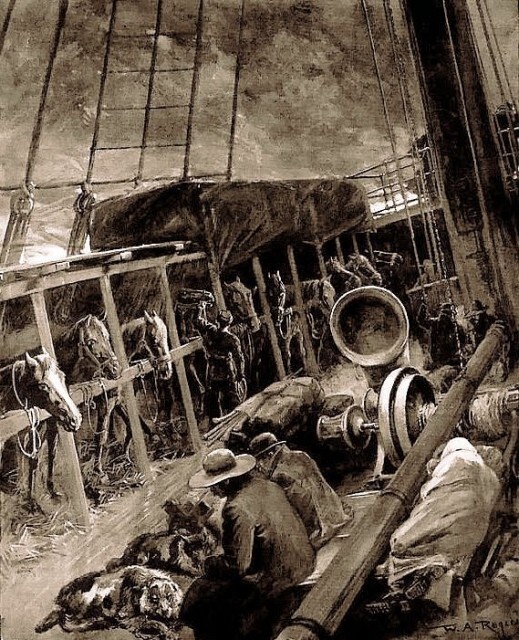
Transporting horses in stalls. Pay attention to the animals suffering from seasickness next to the overseers
But rats, one might say, were the unwitting companions of sailors. And the variety of ship living creatures was not exhausted by them. If a modern person were to board an 18th-century warship on a long voyage, he would most likely mistake it for Noah’s Ark. First of all, there were goats, sheep, pigs, geese, ducks, sometimes rabbits and even calves on board. Naturally, they were present as a future roast, cutlet or chop. The representation of cattle on the ship was often quite significant - for example, the 64-gun Summerset in 1760 loaded 71 calves for a trip to the Mediterranean Sea to feed the squadron in Messina for 3 months. Admiral Edward Hawke believed that a reasonable supply of provisions on a ship of the line was 40 sheep and 12 calves.
At the same time, the Admiralty paid only and exclusively for beef. If captains and senior officers wanted to diversify the menu - sheep, pigs, rabbits, chickens, geese, etc. they bought with their own money. So, Captain Tideman loaded his 60-gun ship with a goat, half a dozen sheep, four boars, five piglets, six hens and thirteen ducks in order to “pamper the gentlemen officers with long evenings” before going to the East Indies. And Captain Clements, leaving Livorno on his 50-gun ship, bought a dozen chickens, three dozen pigeons, five sheep, two geese and a dozen ducks for the sailors and officers of the lower decks. Clements knew that he would soon have to take command of a new ship, and thus wanted to create for himself a reputation as a good commander in order to lure part of the crew with him.
Naturally, for such a number of livestock, whole tons of fodder were needed, and this, in turn, took away the useful cargo from the ship and created big problems.
A separate issue was hygiene and cleanliness on the ship. If chickens, geese, pigs, and rabbits lived in cages and pens, then goats, sheep and calves walked calmly around the ship. Especially for them, bags with grain and crumbled bread were hung on the doors of the cabins and on the upper deck. Naturally, the animals relieved themselves, major and minor, wherever necessary, which, in turn, infuriated the first lieutenant, who was responsible for cleanliness on the ship. It’s easy to imagine that during the battle all these walking creatures simply prevented the sailors from fulfilling theirimmediate responsibilities, and therefore, with the beginning of the battle, a thunderous order followed: “Livestock - overboard!”, and goats bleating from fear, cows mooing, etc. flew into the blue abyss.
The next type of ship fauna were the sailors' pets - cats, dogs, tame rats. For their presence on the ship, real battles broke out with the first lieutenant, who most often looked at them as an additional blow to hygiene and cleanliness. We managed to come to an agreement - I took my Sharik onto the ship. It failed - Sharik was mercilessly sent overboard.
By exotic class 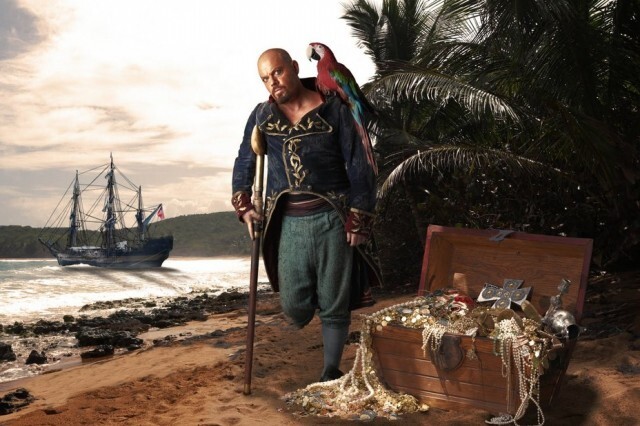
Parrots were a symbol of prosperity. Not every sailor could afford to have a parrot
Somewhere in the middle of the voyage, exotic animals began to appear on the ship - monkeys, parrots, sometimes even ostriches (there is a known case when sailors managed to sneak a rhinoceros onto the ship!). Sailors took these animals on board for mercantile purposes - upon arrival in England they could be sold at a profit. For example, a macaw parrot cost 5-7 guineas at the London bird markets - for an ordinary sailor it was practically a fortune. Rare species of fauna were especially valued and purchased.
A good illustration of this is the real case when in 1758 Captain Forrest captured a ship of the French East India Company, on which he “found 300 thousand pounds worth of living creatures!”, including a grizzly bear and an elephant. It turned out that the ship was chartered by the French Academy of Sciences, or rather by its chairman, Monsieur Reaumur. At the prize trial in London, the collection of animals was recognized not as the state property of France, but as the private property of Reaumur, since he financed the expedition with his own money. She was returned to France, although the elephant had already died by that time. The British kept the ship for themselves as a legitimate prize.
In 1760, Captain August Harvey captured a French merchant ship sailing from Algeria, where he discovered two tigers and three crocodiles intended for sale in Paris to wealthy collectors. The prize court valued the animals at 2,500 pounds.
Sea turtles: live canned sailing fleet 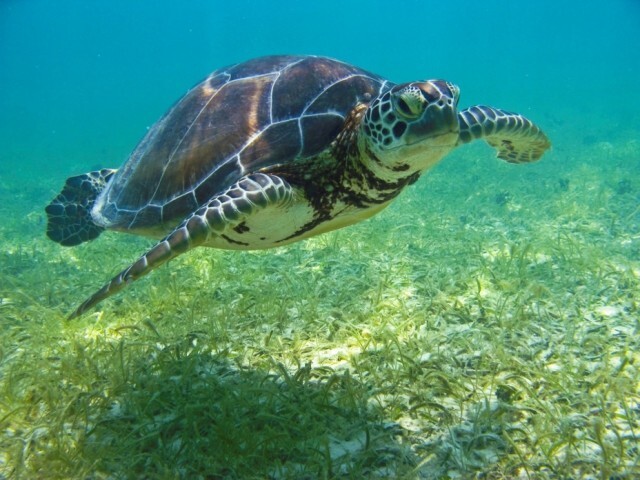
It is also worth mentioning one more animal, without which no months-long voyages in the 18th century, before the invention of canned food and refrigerators, would have been possible. We're talking about sea turtles.
Alfred Brehm describes the treatment of turtles by sailors: “Captured turtles are usually turned over on their backs. There is no ceremony with them: they are simply put aside somewhere on the deck, a sail is stretched over them to protect them from the sun and they do not care about anything else, relying on their survivability. They are not given any food or drink...”
An important advantage of turtles as a food supply was their incredible vitality. She allowed the turtle to be eaten in parts - if its head was not cut off, the turtle did not die. Liver was especially prized and was even eaten raw. Surprisingly, even after cutting out the liver, the turtle continued to live.
The second significant advantage of the turtles was the shell, which can be both a frying pan and a saucepan - that is, there was no need to “wash the dishes” after use. The less thrifty ones simply threw away the shells after eating, but those who thought about their well-being scraped out the shells and put them aside. Upon arrival at the port, these shells could be sold profitably: they fetched from 15 to 50 guineas for one. But don't think that buyers were left at a loss. From one average sea turtle shell you could make 15–25 hair combs (5 guineas each), or up to 100 guitar/violin/cello picks at 2 guineas 20 shillings each. So the business was profitable.
In England, turtles became popular during the Seven Years' War. The turtle fashion was introduced by none other than George Anson. Among the English middle class, turtle dishes became a kind of expression of patriotism, as a reminder to oneself and everyone around them of the ever-expanding British Empire. For example, one of the dishes - a turtle baked surrounded by turtle eggs - was called “the taking of Havana.”
A 1763 cookbook, in the preface to the article “Turtles,” reported that no less than 555 dishes could be made from a fifteen-kilogram turtle. Since there were no traditions of eating turtles in England before the Seven Years' War, the very first dish that limes appreciated was the banal “baking turtles in their own shell.” The most delicious part was considered to be the soft part of the back under the shell, which was covered with a layer of green fat, “tender as olive oil and transparent as a baby’s tear.” Turtle soup was only appreciated by society in the 1780s, and the French were the innovators here.
By the 1770s hTurtle became an expensive but fairly common dish in the British diet. The turtle sold in London markets for 4 shillings and 6 pence per pound. It was from England that turtle meat began its triumphant journey around the world. Vladimir Dal in 1866 in his “Dictionary” writes: “sea turtle is a tasty and healthy food for sailors.”
But the rise was soon followed by a decline. And it was caused by the most ordinary things: over the course of a century and a half, the population of Atlantic turtles almost completely disappeared. Caribbean turtles, as a result of rampant hunting, decreased in number tenfold (from 250 thousand in the 17th century to 25 thousand by the end of the 18th century); in Ceylon, the population decreased to 2000 heads. Only land elephant tortoises from the Galapagos Islands remained available. There, over two centuries, whalers caught and destroyed, according to some estimates, 10 million of these animals.
People should be grateful to the slow-moving creatures, which were often destroyed not only for food, but also for their shells, or even to feed pigs (as Bourdone did at Reunion). It was thanks to these “living canned goods” that sailors were able to sail relatively freely across the world’s oceans before the era of canning. 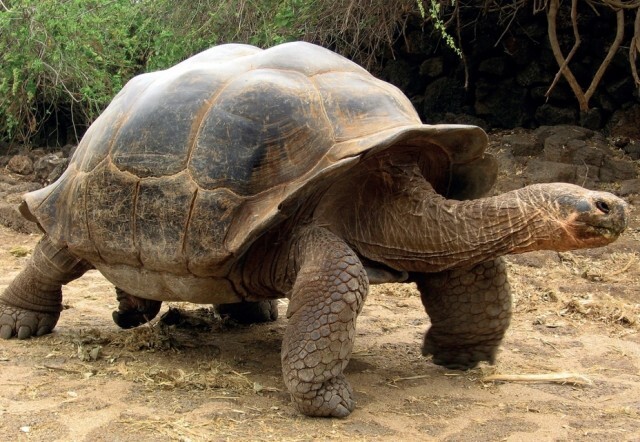
Galapagos elephant tortoise
Add your comment
You might be interested in:



